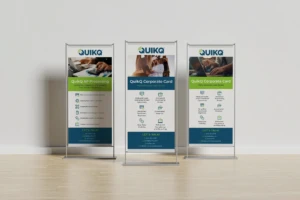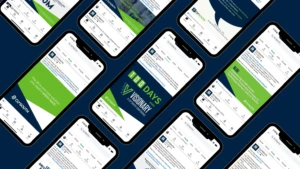Rebrands are high-risk, high-reward endeavors. When they work, they reset perception, open your brand to new markets and energize teams. However, when they miss, the backlash can be swift and costly.
Cracker Barrel just learned this the hard way. After unveiling a refreshed logo, the 55-year-old brand took heavy fire online for abandoning its roots and turning its back on devoted customers. The brand also took a beating on Wall Street, as shares of Cracker Barrel fell $4.22, or 7.2%, to $54.80 on August 21, shedding $94 million in market value. The stock dropped to a low of $50.27 earlier in the day, representing a loss of almost $200 million following the rebrand launch.
We’ve seen different versions of this story before. Southwest, long defined by open seating and its popular “bags fly free” policy, recently moved toward bag fees and other policy pivots under pressure from an activist investor, triggering intense customer pushback and a brand-identity debate that spilled into headlines.
And in another example of a giant brand with world-class marketing teams misjudging the moment, consider Warner Bros. Discovery’s move to rebrand its streaming service as Max, just to change it back to HBO Max less than three years later.
So, what should brand leaders learn from such prominent stories like these?
First, know what a rebrand really is…
A rebrand isn’t just a logo tune-up. It’s a business decision that signals who you are, who you serve and where you’re going. A well-executed rebrand aligns product, promise and experience. Done poorly, it feels cosmetic at best or like a bait-and-switch at worst.
Here is a simple, field-tested playbook we use with clients planning a brand change. These steps work for everything, whether you’re modernizing visuals, repositioning for growth or signaling a strategic shift.
1. Decide why you’re rebranding.
Rebranding just because “it’s time” isn’t a legitimate reason. But these are:
- Entering new markets or international expansion
- Merger or acquisition (signal the new brand, reduce confusion)
- Audience shift (e.g., enterprise to mid-market, or B2B to B2B2C)
- Meaningful business pivot (product mix, pricing, channels)
- Brand fatigue or misalignment with what you actually do
We think of it this way: If you can’t explain the “why” in a single paragraph, you’re not ready to rebrand.
Perfect example: Dunkin’ didn’t drop the “Donuts” from its name on a whim. Their rebrand, officially announced in 2018, supported a multiyear push to be known for beverages and on-the-go convenience, backed by store format changes and menu innovation. In other words, this was anything but a simple name change.
2. Do research and then do more research.
Before you sketch a logo or think about a new secondary color, make sure you know what people actually think about your brand today. A little listening up front saves a lot of fixing later.
Conduct some surveys, utilize focus groups and talk to people, like loyal customers, front-line staff, prospects etc. Ask simple questions, like why did you choose us (or not)? What do we do better/worse than others? If our brand were a person, how would you describe it? Also, scan support tickets, sales call notes, reviews and social comments. Patterns will jump out fast.
It’s also crucial to define success before you launch the rebrand. Pick a handful of KPIs you’ll track for at least 90 – 180 days following the launch. For example:
- Awareness: more branded searches and direct traffic
- Consideration: more demo requests, tour bookings, email signups, etc.
- Conversions: close rates pre- vs. post-launch
3. Budget like it’s a business change.
Make sure to account for these often-underestimated line items:
- Discovery and research
- Brand identity/guidelines (logo, color, type, patterns, motion)
- Content overhaul (web, sales collateral, product, app, social media)
- PR/comms (narrative, FAQ, media training, executive bylines)
- Office supplies and Facilities (business cards, stationary, signage, tchotchke)
- Employee rollout (toolkits, training, launch meetings)
- Tech lift (CMS, asset libraries, templates, tracking)
- Contingency (monitoring, iterations, community management)
If you only fund the “fun” parts (new logo, new site) and ignore rollout and comms, you’ll pay for it later in confusion and course-correction.
4. Run a real brand workshop.
When it comes to a rebrand, everything should be on the table. So, when you get together with key stakeholders to discuss, treat it as a reset, and not a refresh. Hold a brand workshop and make sure there’s plenty of coffee, because you’ll be considering:
- Brand mission, vision, purpose
- Positioning statement and elevator pitch
- Value prop updates
- Competitive differentiators
- Messaging hierarchy and tone of voice
- Tagline/slogan change
- Visual strategy: color, typography, motion, accessibility
- Naming and architecture (products, tiers, services)
Once decisions are made, then it’s time to test. Put color and naming through cultural, accessibility and legal checks. Small groups first, then wider circles. If sentiment divides along clear lines (e.g., legacy loyalists vs. new segments), you’ve found the tension to design for.
5. Coordinate the launch like a product release.
Launching a rebrand needs to be thought of like a phased program with multiple deliverables and objectives.
- Project management: You may want to designate an internal “brand project management office” that can track due dates, keep things moving, create a RACI map (who’s Responsible, Accountable, Consulted, Informed) across multiple business units, etc.
- Cover your assets: You’ll also need to create an asset migration plan. You never know how many assets you have until it’s time for a rebrand, and then you discover web pages, email templates, sales decks, ad units, social bios, signage, packaging, swag, etc., that you either didn’t know about or haven’t thought about in some time.
- Comms kit: You’re going to need to create your brand story, rationale (“what stays/what changes”), visuals, timelines, customer-first FAQ, and more.
- Employee first: In many cases, organizations will soft-launch a rebrand to staff, so they can arm managers with talking points, gather feedback and fix rough edges before the whole world sees it. Create a ‘brand ambassador’ team that is representative of the employee base and get them to become the voice of the brand internally. If you’re employees aren’t on board with the ‘why,’ your customers will never be.
6. Monitor, measure and correct (if needed).
Before you launch, make sure you either have the following in place or a plan to implement shortly:
- Daily social and news monitoring (look for themes, not outliers)
- Pulse surveys with customers and employees
- KPI dashboards (brand lift, traffic, conversion, sentiment)
- Clear thresholds for response (“If [X] dips by [Y], we…”)
And yes, sometimes the right move is to adjust, either visually, verbally or operationally. Delta’s quick rethink of its SkyMiles changes a while back is a good reminder that humility can be a brand asset. Cracker Barrel’s week shows how fast goodwill can evaporate when customers feel a disconnect between what a brand was and what it suddenly says it is.
If you’re considering a rebrand, you must root it in strategy, fund it like a transformation and launch it with the same care you’d give your flagship product. We’re happy to gut-check your rationale, review your plan or run a focused workshop with your leadership team. No pressure, just straight talk and a clear path forward.
Kedran Brush, Brand825’s Co-Founder and CEO, has more than 28 years of marketing leadership experience at the SVP and CMO levels, including revenue growth, customer satisfaction, brand awareness, etc. When she’s not helping brands be their best, Kedran can be found relaxing on the lake, at Tennessee Titans games and trying to stop her dog from chasing the elusive neighborhood squirrel.











